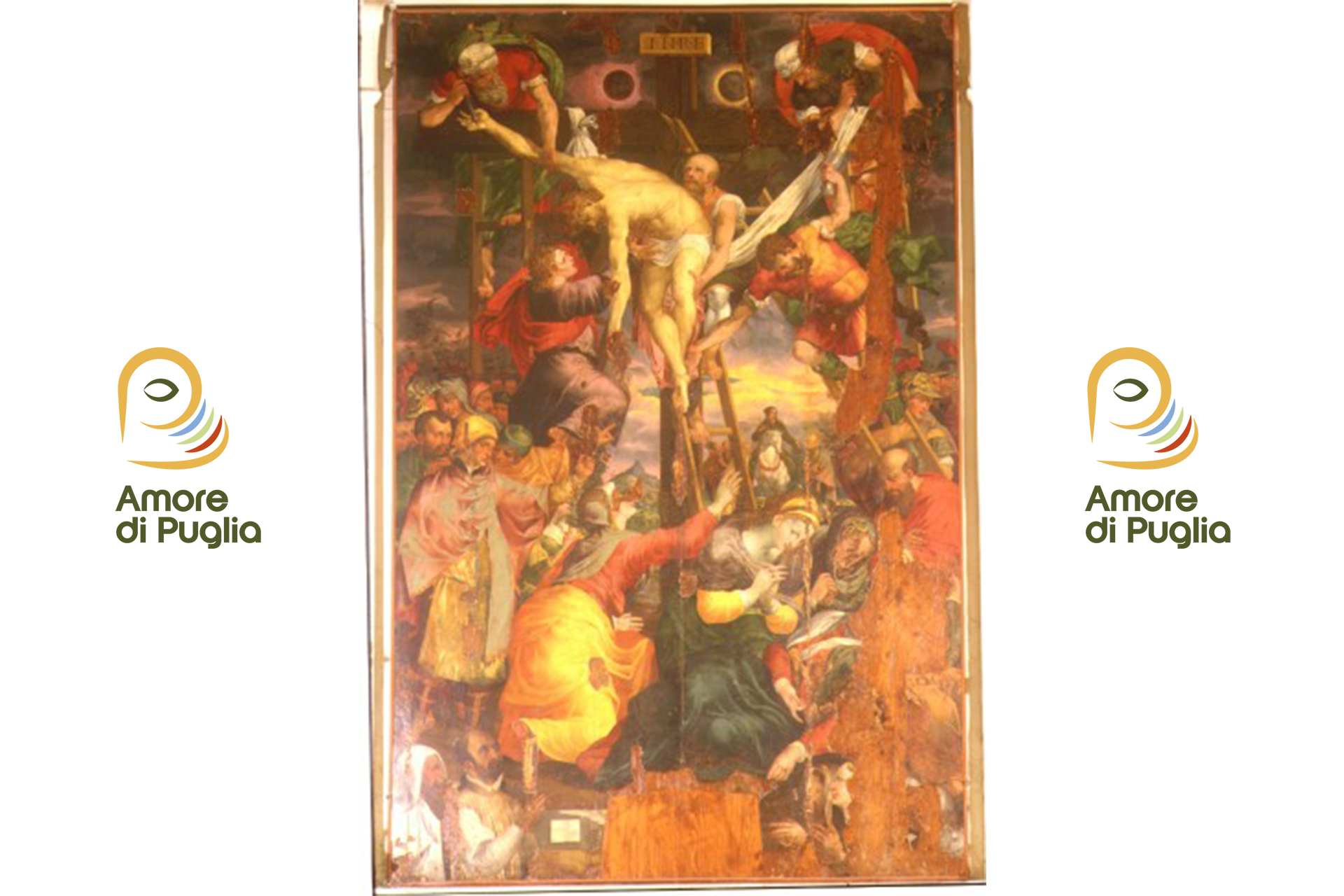
Gianserio Strafella, born around 1520 in Copertino and died in 1573, was an important Italian painter of the Mannerist period, active mainly in the Salento area. Historical chronicles, in particular those of Girolamo Marciano, describe him as a painter of great artistic nobility, a disciple of Michelangelo. Marciano maintains that Strafella can be compared not only to his master and to Raffaello Sanzio, but also to the ancient masters Apelles and Zeuxis. This judgment, although subjective, highlights the importance of Strafella in the artistic panorama of the time.
Strafella’s artistic training was influenced primarily by Roman circles, particularly by artists such as Pietro Negroni and Taddeo Zuccari. Later, his style evolved under the influence of Neapolitan Mannerism, particularly thanks to figures such as Andrea Sabatini and Pedro Rovial. This fusion of styles enriched his technique, particularly in the use of perspective, which he learned from Michelangelo and masterfully applied in his works.
Among his most significant works is the Di Somma chapel, frescoed in Naples in the church of San Giovanni a Carbonara. In Copertino, in the Basilica della Madonna della Neve, five paintings are preserved, including a Deposition and the effigies of Saint Peter, Saint Paul, Saint Zaccaria and Saint Gerolamo. These works, dating back to 1554, were probably part of a polyptych of which, unfortunately, the central figure has not survived. In the same church, you can also admire two works from 1570, entitled “Coept flere” and “Deposizione”.
In Copertino, Strafella was also commissioned to fresco the ceiling of the San Marco Chapel, located in the Copertino Castle complex. Here, he depicted biblical scenes, while other works of his depicting saints are displayed on the walls.
His Mannerist style can also be found in the capital of Lecce. In the Basilica of Santa Croce, there is an oil on panel entitled “Trinità”, which is probably one of his first works, dating back to before 1548. In the church of San Francesco di Paola there is another of his works, “The Virgin with Child and Saints Michael and Catherine of Alexandria”, painted on panel in 1564. In Palazzo Adorno, recent restorations have brought to light some religious paintings attributed to Strafella, found inside a niche.
His artistic legacy extends to many significant centers of the time. In the Church of the Blessed Virgin Mary of Carmel in Nardò, there is a Pietà of his, dated after 1562. A similar work is also present in the parish church of Castro. In the bishop's palace of Gallipoli there is a "Madonna in Gloria", transferred from the small church of Santa Maria di Costantinopoli. Finally, the Mother Church of San Nicola in Cocumola hosts an Assumption, also a work by Gianserio Strafella, which testifies to his influence and talent in the artistic panorama of Puglia.















Leave a comment